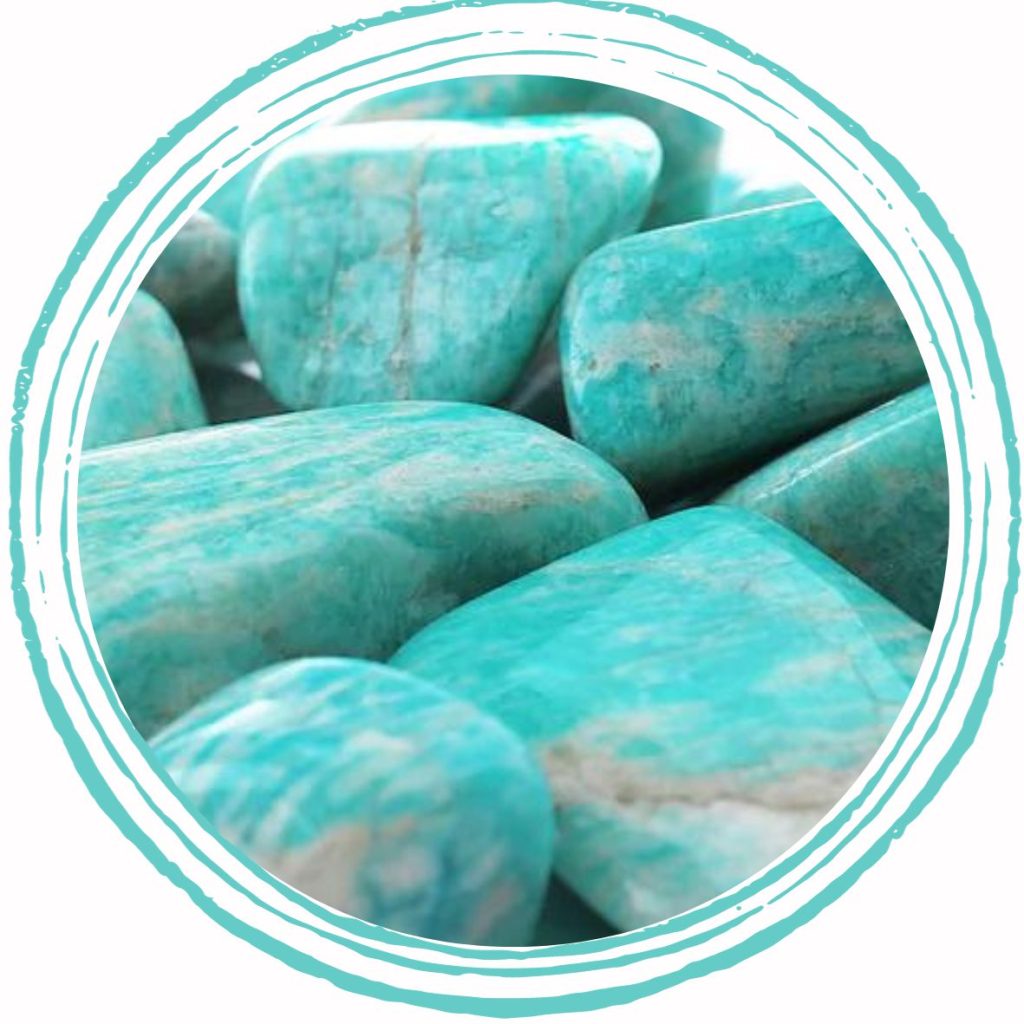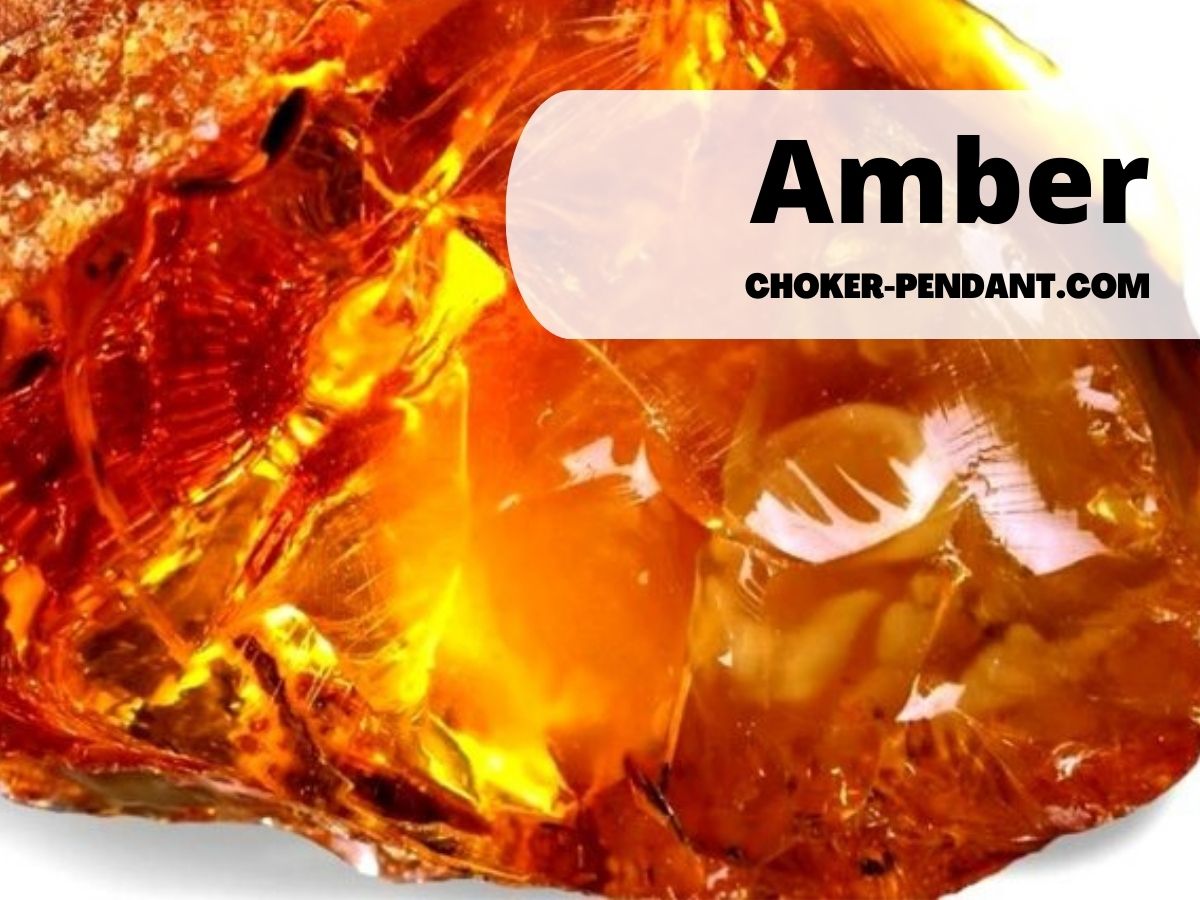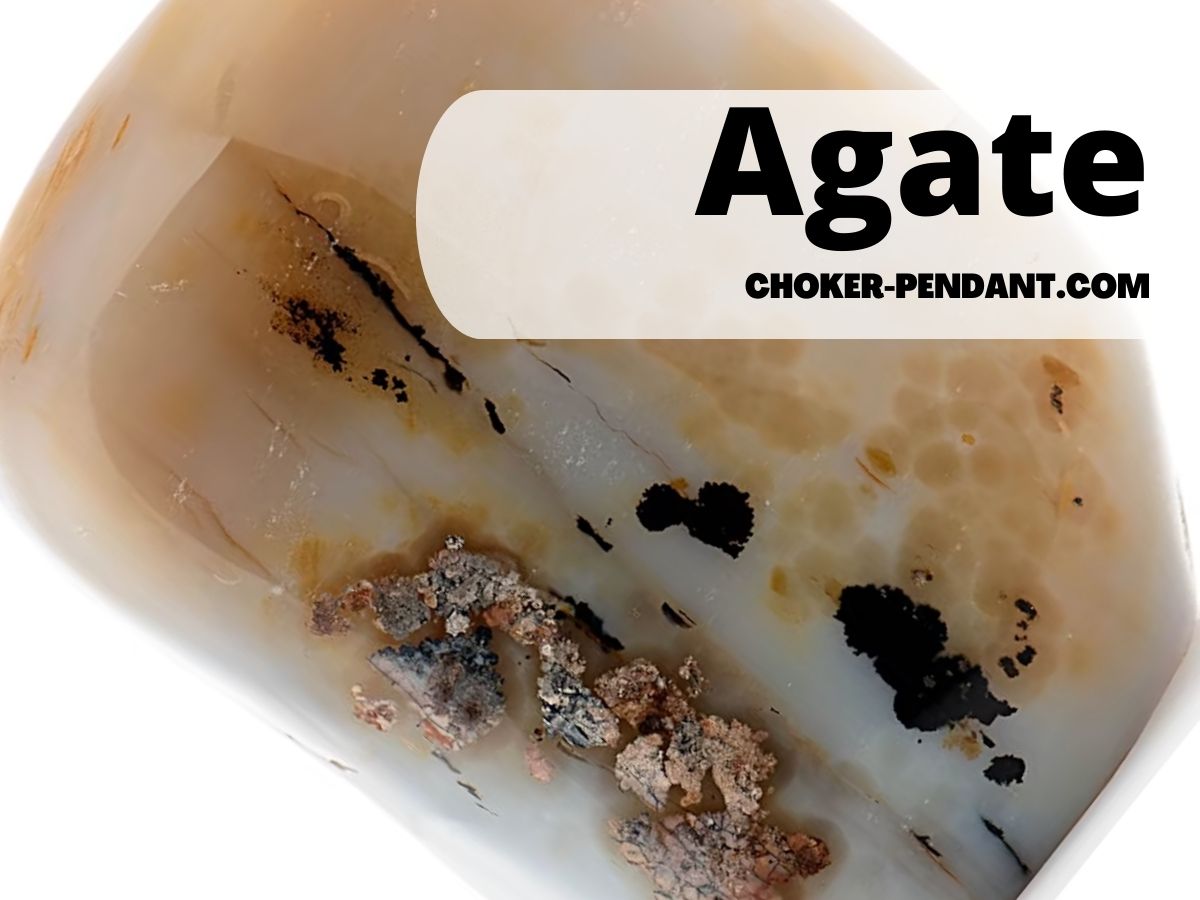What is Amazonite Stone?

Welcome to the enthralling world of Amazonite stone, an enchantment that has captivated humanity for generations. This article will give a thorough examination of this wonderful mineral, including its description, provenance, and the vital function it has played throughout history and in numerous civilizations.
Amazonite is a gem-quality type of microcline feldspar with a unique chemical formula (KAlSi3O8). It is a triclinic crystal system member that often forms prismatic crystals with well-developed faces. Twinning or exsolution lamellae are complicated intergrowth patterns found in these crystals.
Amazonite Specifications & Characteristics
| Origin of the name: | The name Amazonite comes from the Greek word “amazonios,” meaning “of the Amazons.” |
| Group of belonging: | Microcline Feldspar Group. |
| Chemical composition: | KAlSi₃O₈. |
| Hardness: | 6 on the Mohs scale. |
| Crystal system: | Triclinic Crystal System. |
| Deposit(s): | Brazil, Madagascar, Namibia, Russia, and the United States. |
| Cleavage: | Amazonite has perfect cleavage in one direction, which means it can break easily along that plane. |
| Color(s): | Green, blue-green, or turquoise in color. It can also be white, gray, or yellow. |
| Transparency: | Amazonite is translucent to opaque. |
| Luster: | Amazonite has a vitreous to pearly luster. |
| Geological occurrence: | Amazonite is found in pegmatites and hydrothermal veins. Pegmatites are igneous rocks that are formed from the crystallization of magma. Hydrothermal veins are formed when mineral-rich water flows through cracks in rocks and deposits the minerals as it cools. |
Brief overview of Amazonite stone
Amazonite is a magnificent microcline feldspar variation known for its remarkable blue-green hue. It is a member of the alkali feldspar group and is distinguished by its brilliant colors suggestive of tropical oceans.
The term “Amazonite” comes from the assumption that it was discovered near the Amazon River in South America, while further study indicates that this may not be totally correct. Amazonite’s enticing attraction stems not only from its alluring hue but also from its exceptional shine.
When properly polished, this gemstone exhibits an attractive vitreous or slightly pearly sheen, adding to its aesthetic appeal. Due to these appealing characteristics, Amazonite has garnered immense popularity among gemstone enthusiasts and jewelry connoisseurs alike.
Origin
Amazonite was formed millions of years ago by geological processes that created deposits rich in potassium and aluminum within igneous rocks. These deposits were metamorphosed throughout time as a result of numerous geological processes such as heat and pressure, resulting in the production of exquisite Amazonite crystals.
Importance in history and culture
Amazonite has significant historical importance and has been cherished by different cultures over the centuries. This stone was worshiped as a precious gem in ancient Egypt and was connected with the goddess Isis, signifying fertility, healing, and protection.
It was frequently fashioned into beads or pendants and put on mummies as an amulet to guarantee safe passage into the afterlife. Amazonite has mystical importance for the indigenous peoples of South America.
It was said to contain the vitality of the great Amazon River, bringing peace, balance, and good fortune to people who wore or possessed it. Shamans would use its power to communicate with higher worlds during rituals and ceremonies.
In more recent times, Amazonite has become a popular gemstone in modern jewelry designs due to its stunning beauty and metaphysical properties. It is believed to stimulate creativity, enhance communication skills, promote emotional balance, and instill a sense of calmness within its wearer.

Geological Background
Formation and Composition of Amazonite
Amazonite, a captivating semi-precious gemstone, is a variety of microcline feldspar with a unique geological history. This striking mineral forms in igneous rocks, particularly those of the granitic composition. It emerges through the slow cooling and solidification of magma deep within the Earth’s crust.
The process takes millions of years, enabling the development of large crystal formations that showcase Amazonite’s remarkable beauty. Composed mainly of potassium aluminum silicate, Amazonite belongs to the larger family of feldspar minerals known for their essential role in the Earth’s crust.
Within this group, it falls under the classification of alkali feldspars – specifically microcline. Microcline sets itself apart from other varieties due to its vibrant green or blue-green coloration caused by trace amounts of lead and water within its structure.
Relationship to Feldspar Group Minerals
Amazonite shares an intricate relationship with other members of the feldspar mineral group, including orthoclase and albite. These minerals often coexist in granite or pegmatite formations where they undergo a series of complex geological processes over extended periods.
During crystallization, as molten magma cools and transforms into solid rock, these feldspars intermingle and grow together. Orthoclase provides structural support while albite contributes sodium and calcium atoms into their shared crystal lattice.
This collaboration results in unique intergrowth patterns seen in Amazonite specimens that exhibit alternating layers or streaks with different shades or intensities of green. The mesmerizing interplay between these intertwined feldspars gives each Amazonite stone its distinctive character – an ethereal dance frozen in time within its crystalline structure.
Intricate Intergrowth Patterns and Color Variations
One cannot help but be captivated by the intricate intergrowth patterns displayed in Amazonite. These patterns, caused by the alternating growth of orthoclase and albite within the microcline structure, create a mesmerizing effect.
The result is a stone that appears as though it has been woven together by skilled artisans. Moreover, Amazonite’s color variations contribute to its allure and individuality.
The dominant hue is typically an enchanting shade of green, often likened to the lush foliage found in the heart of a well-preserved rainforest. However, within this green spectrum, one can find an array of captivating blue-green hues that range from subtle hints to striking variations.
The exact coloration of each Amazonite specimen is influenced by various factors such as mineral impurities and light absorption properties. Additionally, although rare, some occurrences yield yellow or grayish varieties of Amazonite stones.
These exceptional color variations further enhance the stone’s allure and make each piece truly unique. Through its formation process intricately linked to other feldspar group minerals and its breathtaking intergrowth patterns coupled with captivating color variations, Amazonite continues to awe both geologists and enthusiasts alike with its natural beauty.
Physical Properties
The Crystal Structure and Habit of Amazonite
Amazonite has a triclinic crystal structure and is a stunning gemstone noted for its spellbinding beauty. This particular structure adds to its unique features. Amazonite crystals often develop in prismatic formations, which are commonly elongated and striated.
When cut and polished, these elongated crystals give the stone an attractive aspect. The intergrowth patterns inside the crystal structure add depth to the structure, adding to its attractiveness.
Amazonite possesses excellent cleavage characteristics due to its triclinic crystal system. It displays two prominent cleavage directions intersecting nearly at right angles, resulting in well-defined cleavage planes.
When subjected to stress or pressure along these planes, the stone tends to split smoothly and easily. Although Amazonite has a relatively low hardness compared to other gemstones, it still boasts sufficient durability for use in jewelry and decorative arts.
On the Mohs scale of mineral hardness, it ranks between 6 and 6.5. This moderate hardness enables the stone to resist surface scratching from common abrasive materials; however, care should be taken during wear or handling to avoid potential damage.
Color Variations in Amazonite
One of the most enchanting aspects of Amazonite is its captivating color palette dominated by shades of green with alluring blue-green hues that evoke images of pristine tropical waters. The intensity and distribution of color can vary widely within this range.
Factors influencing color intensity include concentrations of trace elements such as lead or copper within the mineral composition as well as levels of natural irradiation over geological time periods. These factors contribute to variations in color saturation from pale greenish-blue to deep rich greens.
While green is the predominant color, Amazonite occasionally presents itself in rare instances of yellow or gray specimens. These unique variations arise from different mineral impurities present during formation, which influence the stone’s coloration.
Yellow amazonite is relatively uncommon and derives its hue from iron impurities, while gray amazonite results from higher levels of lead content. Intriguingly, the interplay between color variations and crystal structure makes each Amazonite gemstone a singular work of art with a captivating story to tell.
Locations and Mining
Global distribution of Amazonite deposits
Amazonite, with its captivating colors of green and blue, can be found all over the world. Certain areas, however, have acquired prominence for their vast quantities of high-quality specimens. Brazil, famed for its abundant natural resources, has large quantities of Amazonite.
The state of Minas Gerais is particularly well-known for its brilliant and deep green types. Another important source is Russia, particularly the Ural Mountains region, where Amazonite occurs in conjunction with granite.
Madagascar also adds to world supplies, with significant reserves found in several sections of the island, notably the provinces of Anosy and Antananarivo. The US has significant deposits, mostly in Colorado’s Pikes Peak area and numerous Western states.
Specific regions known for high-quality specimens
Within these countries, specific regions have gained a reputation for producing exceptional Amazonite specimens coveted by collectors and lapidaries worldwide. In Brazil, the Teófilo Otoni region stands out as it yields stunning translucent crystals characterized by intense blue-green hues. In Russia, the Ilmen Mountains are recognized for their large Amazonite crystals that display sharp striations and exceptional clarity.
Madagascar’s Anosy Region has become synonymous with strikingly vivid green Amazonite exhibiting excellent color saturation. As for the United States’ Colorado mining district near Pike’s Peak, it holds a special place in history as one of the earliest sources of this captivating stone.
Mining techniques for extracting Amazonite
To extract Amazonite from its natural surroundings requires both skillful craftsmanship and technological advancements. Traditional methods involved manual labor-intensive processes such as pickaxe excavation or using hand tools like chisels to separate larger blocks from surrounding rocks.
These methods often required extensive physical effort while minimizing damage to delicate crystals during extraction. In recent years, modern technologies have revolutionized Amazonite mining, making it more efficient and less laborious.
Mechanized equipment, such as hydraulic drill rigs and excavators, are employed to extract larger quantities of ore in a shorter timeframe. This advancement has increased productivity while reducing the physical strain on miners.
However, challenges still exist in preserving the integrity of delicate Amazonite crystals during extraction. The stone’s cleavage planes make it susceptible to breakage if not handled with care.
Historical Significance
Ancient civilizations’ fascination with Amazonite
Throughout history, ancient civilizations held captivating tales and beliefs surrounding Amazonite. One such connection lies with the legendary Amazons – a tribe of warrior women from Greek mythology.
It was believed that these formidable warriors wore shields adorned with Amazonite gemstones to enhance their powers during battle. Furthermore, ancient cultures cherished Amazonite for its aesthetic appeal and spiritual significance.
This enchanting stone was often used in jewelry making, talismans, and decorative arts. Egyptians admired its beauty and associated it with fertility and abundance.
In Mesopotamia, Amazonite was used for amulets to bring good luck and protection against negative energies. The ancient inhabitants of Central America considered this stone sacred and utilized it in rituals for communication with higher realms.
Uses in Modern Times
Jewelry industry’s love affair with Amazonite
The allure of Amazonite continues to captivate the modern jewelry industry due to its exquisite color variations and unique properties. Designers frequently incorporate this gemstone into various cuts, settings, and designs to create stunning pieces that evoke a sense of natural beauty.
Cabochons showcasing smooth domed surfaces are popular choices because they accentuate the stone’s captivating tones while highlighting its characteristic intergrown patterns. Beyond its visual appeal, Amazonite is believed by some to possess healing properties.
It is said to promote harmony, balance emotions, and enhance communication skills. Some individuals wear Amazonite jewelry as a personal talisman to invoke inner strength and courage during challenging times.
Decorative applications beyond jewelry
Amazonite’s versatility extends beyond the realm of jewelry. Its striking appearance makes it a preferred choice for artistic endeavors such as carvings, sculptures, and ornamental objects.
The stone’s vibrant colors and unique patterns lend themselves well to skilled craftsmanship that transforms raw material into intricate works of art. Additionally, interior designers appreciate Amazonite for its ability to infuse spaces with a sense of tranquility and natural beauty.
The stone can be found adorning countertops, backsplashes, and accent pieces in luxury homes and commercial spaces alike. Its presence adds an earthly elegance that complements various aesthetics.
Conclusion
We uncover not only the geological miracle of Amazonite, but also its rich historical relevance and numerous current applications as we dig into its enthralling universe. This beautiful gemstone has been valued by ancient civilizations for millennia and continues to astonish people today. Amazonite’s journey from nature’s embrace to ornament is absolutely astounding, from its global distribution in nations such as Brazil, Russia, Madagascar, and the United States to novel mining processes that conserve beautiful crystals.
With its mesmerizing hues of green and blue adorning exquisite jewelry designs or enhancing aesthetic appeal in decorative arts or interior spaces, Amazonite brings joy and tranquility while adding a touch of natural beauty to our lives. Embracing this magnificent stone allows us to connect with ancient traditions while appreciating modern artistic expressions—a testament to the enduring allure of this remarkable gemstone.




